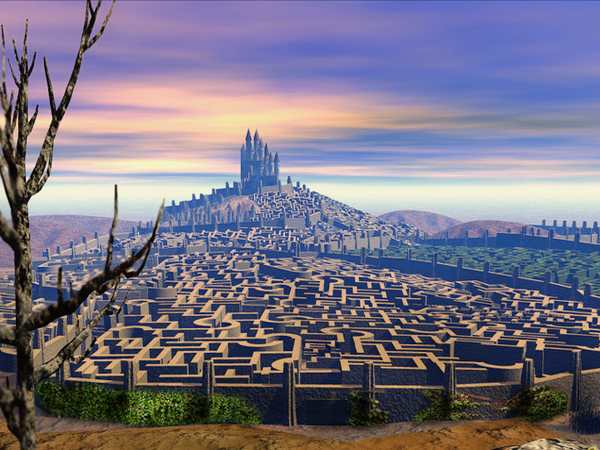The legend of the labyrinth, with its intriguing ties to ancient Greek mythology, continues to captivate scholars and enthusiasts alike. The tale of King Minos, his labyrinth, and the fearsome Minotaur has sparked endless fascination. From prayers to Poseidon to Theseus’ heroic quest, let’s delve into the enigmatic story and the ongoing search for the labyrinth’s true location.
The Myth of King Minos and the Minotaur
According to Greek legend, King Minos, the son of Zeus, ascended to the throne of Crete amidst disputes with his brothers. To prove his divine right to rule, Minos prayed to Poseidon, the god of the sea, asking for a sign. Poseidon sent a magnificent white bull, which Minos was supposed to sacrifice in the god’s honor. However, Minos decided to keep the bull and sacrifice a lesser one from his herd instead. This act of defiance angered Poseidon, who retaliated by making Minos’ wife, Pasiphae, fall in love with the bull.
Pasiphae enlisted the help of the brilliant architect Daedalus to construct a wooden cow. She climbed inside this contraption, allowing the bull to mate with her. From this union, the Minotaur was born—a creature with the head and tail of a bull and the body of a man. Horrified by this monstrosity, Minos commanded Daedalus to build an intricate labyrinth to imprison the Minotaur.
The Labyrinth and the Tribute
The labyrinth was a vast and complex maze, designed to be impossible to escape. Once it was completed, Minos confined the Minotaur within its winding passages. To satiate the creature, Minos demanded a gruesome tribute from Athens: every nine years, seven young men and seven young women were sent into the labyrinth as sacrificial offerings.
The hero Theseus volunteered to end this brutal tradition. Upon arriving in Crete, he met Ariadne, Minos’ daughter, who fell in love with him. Ariadne provided Theseus with a ball of thread, instructing him to tie one end at the entrance of the labyrinth and unwind it as he ventured deeper into the maze. This clever strategy allowed Theseus to navigate the labyrinth and ultimately confront the sleeping Minotaur. He killed the beast and retraced his steps, leading the remaining Athenians to safety.
The Search for the Labyrinth
For centuries, the labyrinth’s exact location has remained a mystery, fueling countless expeditions and excavations. The most famous site associated with the labyrinth is the palace of Knossos on Crete, excavated by British archaeologist Sir Arthur Evans between 1900 and 1935. Evans partially reconstructed the site, drawing over half a million visitors annually who are told that Knossos was King Minos’ palace and possibly the labyrinth’s location.
However, alternative theories have emerged. A team from Oxford University and the Hellenic Speleological Society explored the Labyrinthos Caves near Gortyn, a former Roman capital of Crete, situated about 20 miles from Knossos. These caves, stretching over two and a half miles with numerous tunnels and chambers, have been linked to the labyrinth myth for centuries. Despite their historical significance, they fell into neglect, even serving as a Nazi ammunition dump during World War II.
Nicholas Howarth, an Oxford geographer leading the expedition, described the Gortyn caves as menacing and labyrinthine. He suggested that Arthur Evans’ prominence and resources might have skewed historical favor towards Knossos, but the true labyrinth could be elsewhere, including Gortyn or even Skotino on the Greek mainland.
The Myth and Its Legacy
While the physical existence of King Minos’ labyrinth remains unproven, the myth endures in cultural and historical contexts. Andrew Shapland, curator of Greek Bronze Age at the British Museum, emphasized that Knossos’ mention by the ancient poet Homer lends credibility to its association with the labyrinth.
The Minotaur, as depicted in mythology, was a formidable creature. Described as standing around 10 feet tall, with the body of a human and the head and shoulders of a bull, the Minotaur was covered in hair and possessed deadly horns. Trapped in the labyrinth, it fed on the sacrificial youths sent from Athens until Theseus’ intervention.
Although the Minoan civilization eventually declined, possibly due to a volcanic eruption and subsequent tidal wave around 1450 BCE, the legend of the labyrinth and the Minotaur has persisted. Theseus’ triumph over the Minotaur remains a popular subject in art and literature, symbolizing bravery and cunning.
The Labyrinth in Modern Exploration
The fascination with the labyrinth continues to inspire modern explorers and archaeologists. The caves at Gortyn, with their extensive tunnels and mysterious chambers, offer a compelling alternative to Knossos. Despite the site’s neglect, the potential for groundbreaking discoveries remains.
The legend of the labyrinth also resonates in contemporary culture. From Dante’s portrayal of the Minotaur as the guardian of the Seventh Circle of Hell in “The Divine Comedy” to modern adaptations in literature and film, the myth captivates audiences with its blend of heroism, mystery, and ancient intrigue.
Conclusion
The labyrinth of King Minos, whether a physical structure or a symbolic representation of human ingenuity and folly, continues to inspire and intrigue. As archaeologists and scholars explore potential sites like Knossos, Gortyn, and beyond, the search for the labyrinth reminds us of the enduring power of myths. These stories, woven into the fabric of human history, challenge us to look beyond the surface and uncover the truths hidden within ancient legends.

